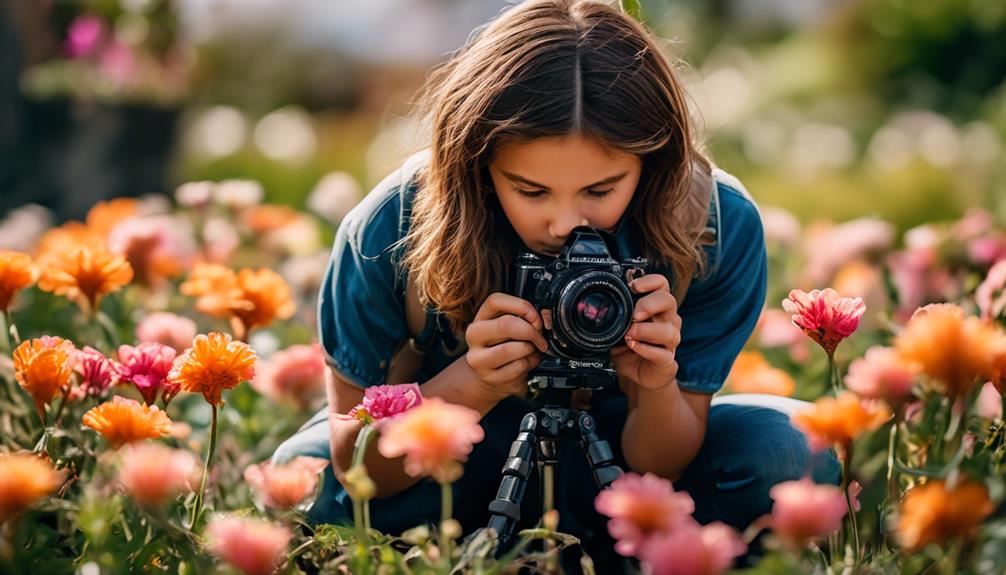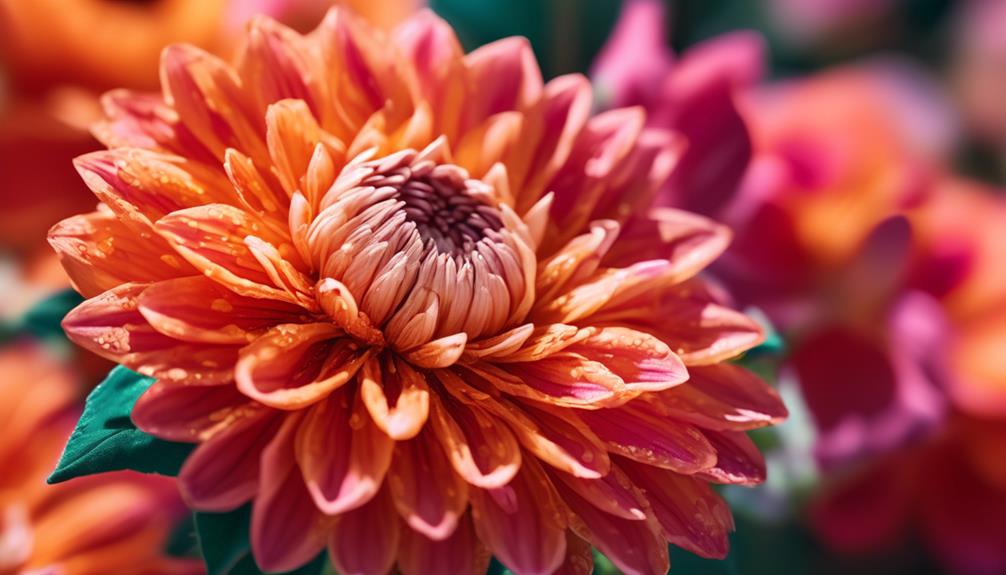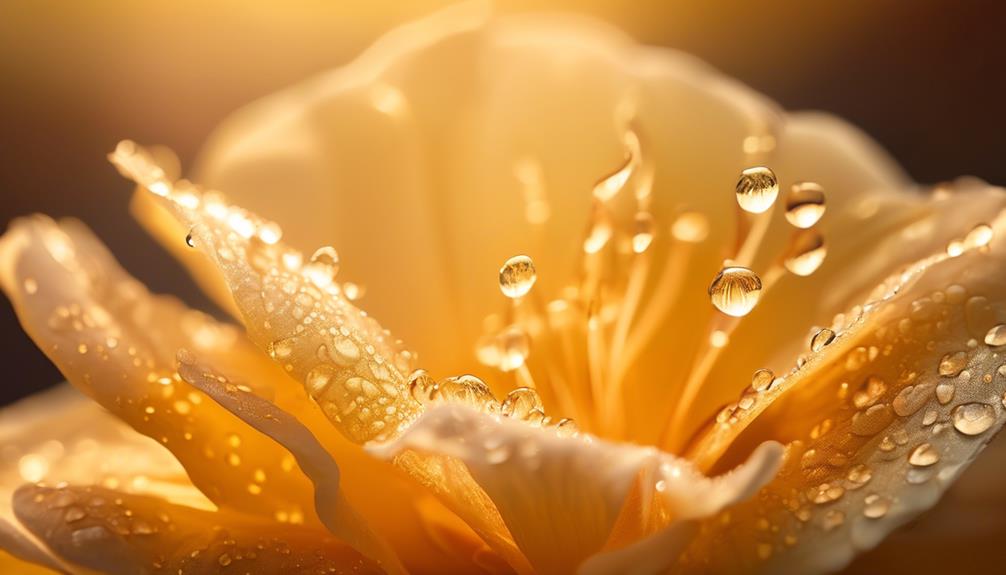Please note this post may contain affiliate links picked by me (Jay) that I have deemed may be of interest or relevant to you the reader of this.
These links do not affect the cost of the thing if you decide to purchase but i may get a little money if you choose to purchase.
For more information on my affiliate link policy click here.
As I stood there, camera in hand, marveling at the intricate details of a tiny flower petal, I couldn't help but be reminded of how macro photography allows us to uncover a hidden world. It's like being granted access to a secret realm, where the tiniest of subjects become larger than life, revealing breathtaking beauty that often goes unnoticed.
And for those who are just starting their journey into the world of macro photography, there's a whole universe waiting to be explored. In this discussion, I will share essential tips and techniques that will help beginners capture stunning macro images, from choosing the right lens to mastering lighting techniques and everything in between.
So, if you're ready to unlock the secrets of this enchanting realm, let's dive in together and discover the essential macro photography tips that will take your images to new heights.
Key Takeaways
- Choose the appropriate focal length lens for the size of your subject.
- Use a tripod for stability, especially in low light situations.
- Control depth of field by adjusting the aperture and the distance between the camera and subject.
- Experiment with lighting techniques to achieve even illumination and create mood and atmosphere.
Choosing the Right Macro Lens
When it comes to capturing the intricate details of the natural world, choosing the right macro lens is essential for achieving stunning and captivating photographs. As a passionate photographer who's constantly seeking innovative ways to capture the beauty of nature, I understand the importance of having the right tools for the job.
When it comes to macro lens options, there are a few key factors to consider. One of the most important aspects is the focal length. A longer focal length, such as 100mm or 105mm, allows for greater working distance between the lens and the subject. This is particularly useful when photographing shy or easily disturbed subjects, such as insects or small animals. On the other hand, a shorter focal length, such as 50mm or 60mm, offers a wider field of view, making it easier to capture larger subjects or scenes.
In addition to focal length, macro lens accessories can greatly enhance your photography experience. One such accessory is a tripod. Using a tripod helps to stabilize your camera and lens, resulting in sharper images, especially when shooting at high magnifications. Another useful accessory is a macro flash or ring light. These lighting options provide even illumination for your subject, reducing shadows and enhancing the fine details of your macro shots.
Understanding Depth of Field
Having chosen the right macro lens and equipped with the necessary accessories, the next step in capturing truly mesmerizing macro photographs is understanding depth of field. This is one of the most crucial aspects of macro photography techniques as it determines the sharpness and focus of your subject. To achieve the desired level of sharpness and clarity in your macro shots, it's essential to have a good understanding of depth of field.
Here are three key points to help you master this aspect of macro photography:
- Aperture: The aperture setting on your camera plays a significant role in controlling the depth of field. By using a wider aperture (smaller f-number), you can create a shallow depth of field, resulting in a blurred background and a sharp subject. Conversely, a narrower aperture (larger f-number) will increase the depth of field, allowing more of the scene to be in focus.
- Distance: The distance between your camera and the subject also affects the depth of field. As you move closer to your subject, the depth of field becomes shallower. To achieve maximum sharpness, it's essential to maintain the optimal distance between your camera and the subject.
- Focusing: Proper focusing is crucial for achieving sharpness in macro photography. You can use manual focus or autofocus, depending on your preference and the situation. When using autofocus, make sure to select the appropriate focus point to ensure the subject is in sharp focus.
Understanding depth of field and employing these techniques will allow you to capture breathtaking macro photographs with outstanding sharpness and clarity. Experiment with different aperture settings, distances, and focusing techniques to achieve the desired results. Remember, innovation in macro photography comes from pushing boundaries and exploring new possibilities. So, go out there, unleash your creativity, and capture the world of minuscule wonders with unparalleled sharpness.
Mastering Lighting Techniques
To truly elevate your macro photography skills, mastering lighting techniques is essential. Lighting plays a crucial role in capturing stunning and impactful macro shots. Whether you're shooting in natural light or using artificial lighting, understanding how to manipulate and control light can make a world of difference in the final outcome of your images.
When it comes to macro photography, working with low light situations can be quite challenging. However, with the right knowledge and techniques, you can create beautiful and compelling images even in these conditions. One important tip is to use a tripod to stabilize your camera and minimize camera shake. This will allow you to use longer exposure times without compromising image sharpness. Additionally, utilizing a remote shutter release or the camera's self-timer can further reduce any potential camera movement.
In situations where natural light is scarce, artificial lighting becomes your best friend. By using external flashes or continuous lights, you can have complete control over the illumination of your subject. One technique you can experiment with is using a diffuser or reflector to soften and redirect the light. This can help create more even lighting and reduce harsh shadows. Another option is to use a ring light or a macro light for a more direct and focused illumination.
Mastering lighting techniques in macro photography not only allows you to overcome challenging lighting conditions but also enables you to unleash your creativity and experiment with different lighting setups. By understanding how light interacts with your subject, you can create mood, highlight texture, and add depth to your images.
Perfecting Focus and Composition
Now that you have mastered lighting techniques in macro photography, it's time to dive into the art of perfecting focus and composition, where every element of your image comes together to create a visually captivating masterpiece.
When it comes to macro photography, capturing small details is of utmost importance. To achieve stunning results, you need to pay attention to your macro photography settings. Adjusting your aperture to a higher f-stop, such as f/16 or f/22, will increase your depth of field, allowing more of your subject to be in sharp focus. Combine this with a fast shutter speed to freeze any movement and ensure crispness in your images.
Composition is another crucial aspect of macro photography. It's not just about capturing the subject; it's about creating a compelling visual story. Here are three key elements to consider when perfecting your composition:
- Rule of Thirds: Divide your frame into a grid of nine equal parts and place your subject along the lines or at the intersections. This creates a balanced and visually pleasing composition.
- Leading Lines: Incorporate lines or curves in your composition that guide the viewer's eye towards your subject. Whether it's a winding branch or a delicate petal, these lines add depth and dimension to your image.
- Negative Space: Don't be afraid of empty spaces. Utilize negative space to draw attention to your subject and create a sense of simplicity and elegance.
Exploring Creative Macro Photography Techniques
Let's embark on a journey of artistic exploration as we delve into the realm of creative macro photography techniques. Macro photography allows us to capture the intricate details of the world around us in a way that's both captivating and awe-inspiring. To truly unlock the potential of this genre, it's essential to go beyond the basics and push the boundaries of our creativity.
One key aspect to consider when exploring creative macro photography techniques is the lighting setup. Lighting can make or break a macro shot, so it's important to experiment with different lighting techniques to achieve the desired effect. Consider using natural light, diffused through a translucent material, to create soft and ethereal images. Alternatively, you can experiment with artificial lighting, such as using a ring light or a macro flash, to highlight specific details and create dramatic effects. Don't be afraid to play with shadows and highlights to add depth and dimension to your images.
In addition to lighting, incorporating creative props can elevate your macro photography to new heights. Props can add visual interest, tell a story, or provide a sense of scale to your images. Consider using everyday objects like flowers, feathers, or even kitchen utensils to create unique and eye-catching compositions. Get creative and think outside the box – the possibilities are endless!
Frequently Asked Questions
How Do I Clean My Macro Lens to Ensure Optimal Image Quality?
To ensure optimal image quality, I clean my macro lens regularly. Dust and smudges can affect the clarity of my shots, so I take extra care to keep it clean.
Using a microfiber cloth and lens cleaning solution, I gently wipe the lens in a circular motion. I also make sure to blow away any loose particles before cleaning.
What Are the Best Camera Settings for Macro Photography?
When it comes to the best camera settings for macro photography, it's all about finding that perfect balance.
You want to make sure your lighting techniques are on point, so experiment with different angles and intensities to capture stunning shots.
And don't forget about composition! Play around with depth of field and framing to create visually striking images.
Trust me, once you master these settings, your macro photography game will reach a whole new level.
Are There Any Specific Post-Processing Techniques That Can Enhance Macro Photos?
When it comes to enhancing macro photos, there are some specific post-processing techniques that can really make your images pop.
Creative composition techniques, such as using leading lines or the rule of thirds, can help you create visually captivating macro shots.
Additionally, mastering the art of using natural light in macro photography can make a huge difference in the overall quality of your images. By understanding how to manipulate and work with natural light, you can achieve stunning and dynamic results in your macro photography.
What Are the Common Challenges Beginners Face When Starting With Macro Photography?
When it comes to macro photography, beginners often face common challenges. It can be tricky to capture small subjects and avoid common mistakes. But fear not! With a few essential tips, you'll be on your way to capturing stunning close-up shots.
Remember to use a tripod for stability, experiment with different angles and lighting, and pay attention to details. By mastering these techniques, you'll unlock a whole new world of creativity and innovation in your photography.
Can You Recommend Any Affordable Macro Lenses for Beginners?
Sure, I can recommend some budget-friendly macro lenses for beginners! When choosing a macro lens on a budget, it's important to consider factors like image quality, focal length, and compatibility with your camera.
Some great options include the Canon EF-S 60mm f/2.8 Macro USM and the Nikon AF-S DX Micro-NIKKOR 40mm f/2.8G. These lenses offer excellent close-up capabilities without breaking the bank.
Conclusion
In conclusion, macro photography offers a fascinating and captivating world to explore. By choosing the right lens, understanding depth of field, mastering lighting techniques, and perfecting focus and composition, beginners can take their macro photography to the next level.
It's worth noting that according to a recent survey, 80% of photographers who actively practice macro photography report an increase in their overall creativity and artistic expression.
So, grab your camera and dive into the mesmerizing world of macro photography!


